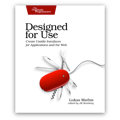iPad: A Consumption Device, After All?
Via Daring Fireball, Neil Cybart writes:
When compared to the latest iPads, these first two iPads are simply inferior tablets with slow processors, heavy form factors, and inferior screens. But none of that matters with owners. This is problematic and quite concerning, suggesting that many of these tablets are just being used for basic consumption tasks like video and web surfing and not for the productivity and content creation tools that Apple has been marketing.
The Apple media has long been pushing against this narrative, and, in doing so, has helped shield Apple from much-needed criticism at a time when decreasing sales had not yet forced Apple to acknowledge that something was wrong with the iPad.
I wrote about this a while ago.
Cybart continues:
In reality, one reason sales momentum was slowing was iPad owners weren’t upgrading their device.
I think this is a highly problematic argument. The fact that Apple is bringing this up shows just how poorly the iPad doing. If it is already relying on upgrade sales for a major portion of its sales, and sales are actually falling without upgrade sales, it is not reaching enough new customers to maintain growth. That’s bad.
The PC market relies on upgrade sales. The plastic spoon market relies on upgrade sales. The pants market relies on upgrade sales. But a device as young as the iPad should not be relying on upgrade sales to this degree. If Apple thinks that the iPad’s sales are falling because of a long upgrade cycle, the implication is that the iPad has already reached a large portion of all people it’s ever going to reach.
By selling a device that is truly designed from the ground-up with content creation in mind, the iPad line can regain a level of relevancy that it has lost over the past few years. In every instance where the iPad is languishing in education and enterprise, a larger iPad with a 12.9-inch, Force Touch-enabled screen would carry more potential.
Better hardware would help, but I think it’s very important to acknowledge that the thing standing in the way of productive work on the iPad is not its hardware. It’s iOS.
iOS is a cumbersome system for even reasonably complex productive tasks. Apple has started fixing the window management problem, but there’s still the document management problem1 (most real-world tasks involve multiple documents from multiple sources — there’s pretty much no way to organize and manage document from different applications in iOS), and the workflow problem (many real-world tasks involve putting the same document through multiple apps, which iOS is still not great at, albeit getting better).
And then there’s the fact that few developers are willing to invest a lot of money into productive apps on the iPad. They are expensive to create, the market is small, and Apple’s handling of how apps are sold on its devices does not instill confidence.
The thing that’s preventing people from using the iPad productively is not the small screen, it’s the operating system.
Right now, for most of its users, the iPad is a consumption device. It’s not a PC replacement, and it’s not really much better than a phone for gaming or watching movies or reading. That puts it into an awkward position. But it doesn’t have to be. There’s no reason the iPad couldn’t replace most PCs in people’s homes, and be better than those PCs at most tasks people currently use PCs for. No reason — except for Apple’s lack of willingness to make the iPad into that device.
Fixing this problem does not mean «giving access to the file system.» When I say that Apple needs to fix document management, people sometimes assume that I’m saying that they should bring something like the Finder to iOS. I’m not. The Finder approach to file management is broken. It was designed for a time when people had a tiny number of apps, and almost no storage space. That time doesn’t exist anymore, and neither should the Finder. 
If you require a short url to link to this article, please use http://ignco.de/720

If you liked this, you'll love my book. It's called Designed for Use: Create Usable Interfaces for Applications and the Web. In it, I cover the whole design process, from user research and sketching to usability tests and A/B testing. But I don't just explain techniques, I also talk about concepts like discoverability, when and how to use animations, what we can learn from video games, and much more.
You can find out more about it (and order it directly, printed or as a DRM-free ebook) on the Pragmatic Programmers website. It's been translated to Chinese and Japanese.
Lukas Mathis's Blog
- Lukas Mathis's profile
- 2 followers



